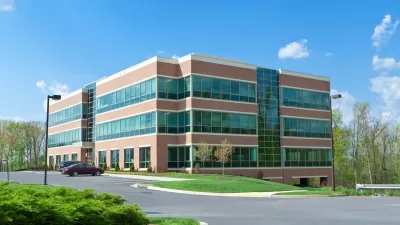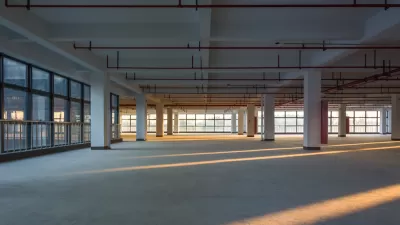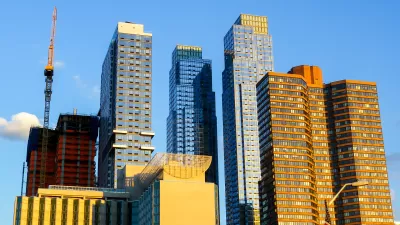A glut of office buildings in the pro-development state is leading to some of the highest vacancy rates in the country, even as population growth spikes.

Writing in The Wall Street Journal, Konrad Putzier describes the mismatch between Texas cities’ booming population growth and the lingering vacancies in the same cities’ office buildings.
In Houston, Dallas, and Austin, roughly 25 percent of office space was vacant in the third quarter of 2023. “That was more than double New York’s vacancy rate of 12% and well above San Francisco’s vacancy rate of 17%,” Putzier writes, despite those cities having some of the nation’s highest return-to-office rates.
What does this mean? For Putzier, “Texas’ high vacancy rate offers more evidence that the U.S. office market’s biggest problem hasn’t been primarily remote work. It is a glut of buildings across the U.S., which has been decades in the making and helps explain why the country has long had much higher vacancy rates than Europe or Asia.”
Putzier explains that Texas is “an extreme case” due to its historically low land costs and lax regulations. “Most of the aging office buildings are in the suburbs around the three big cities. They are increasingly out of favor with a new generation of desk workers who tend to prefer modern buildings in walkable urban neighborhoods.” Now, the state’s biggest cities are seeing vacancy rates close to twice as high as in 2019, with some buildings seeing as much as 34 percent vacancy.
FULL STORY: Texas Cities Are Booming, but Their Offices Are the Most Vacant

Alabama: Trump Terminates Settlements for Black Communities Harmed By Raw Sewage
Trump deemed the landmark civil rights agreement “illegal DEI and environmental justice policy.”

Study: Maui’s Plan to Convert Vacation Rentals to Long-Term Housing Could Cause Nearly $1 Billion Economic Loss
The plan would reduce visitor accommodation by 25% resulting in 1,900 jobs lost.

Planetizen Federal Action Tracker
A weekly monitor of how Trump’s orders and actions are impacting planners and planning in America.

Study Links Covid and Poor Driving
The effects of the virus, including ‘brain fog,’ can make driving more difficult and dangerous.

Waymo Gets Permission to Map SF’s Market Street
If allowed to operate on the traffic-restricted street, Waymo’s autonomous taxis would have a leg up over ride-hailing competitors — and counter the city’s efforts to grow bike and pedestrian on the thoroughfare.

Parklet Symposium Highlights the Success of Shared Spaces
Parklets got a boost during the Covid-19 pandemic, when the concept was translated to outdoor dining programs that offered restaurants a lifeline during the shutdown.
Urban Design for Planners 1: Software Tools
This six-course series explores essential urban design concepts using open source software and equips planners with the tools they need to participate fully in the urban design process.
Planning for Universal Design
Learn the tools for implementing Universal Design in planning regulations.
Caltrans
Smith Gee Studio
Institute for Housing and Urban Development Studies (IHS)
City of Grandview
Harvard GSD Executive Education
Toledo-Lucas County Plan Commissions
Salt Lake City
NYU Wagner Graduate School of Public Service





























